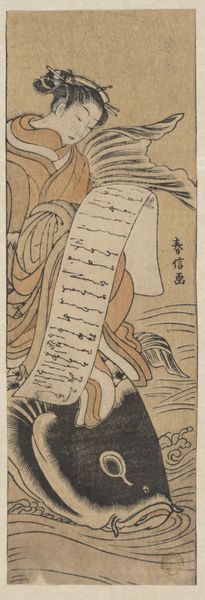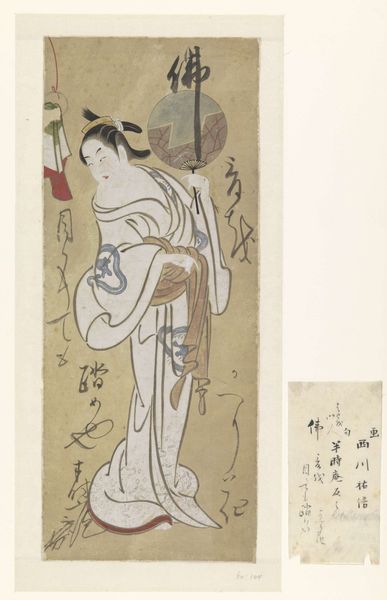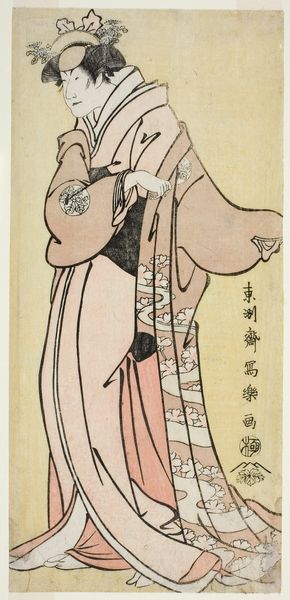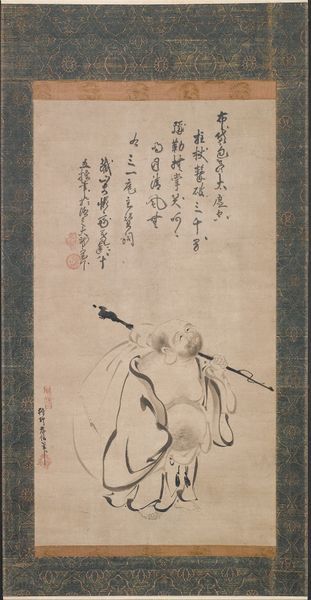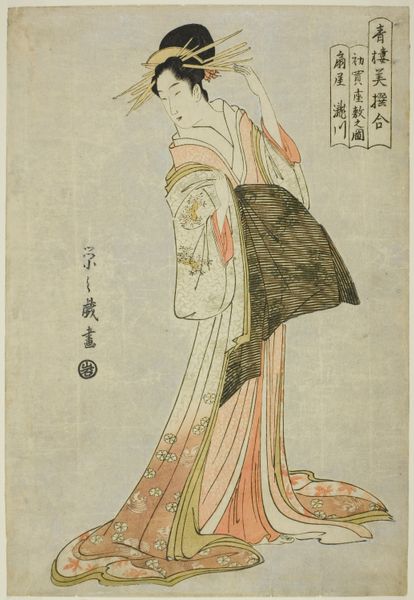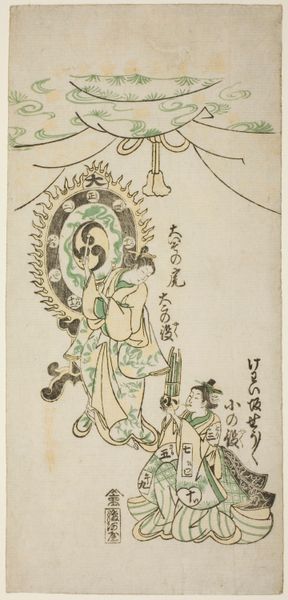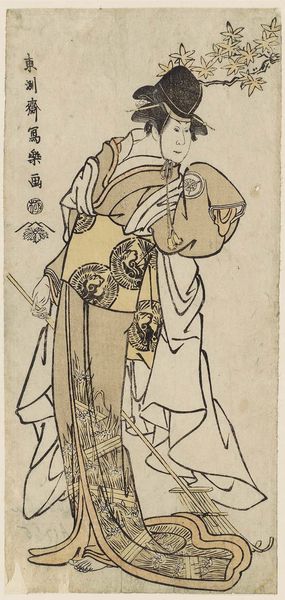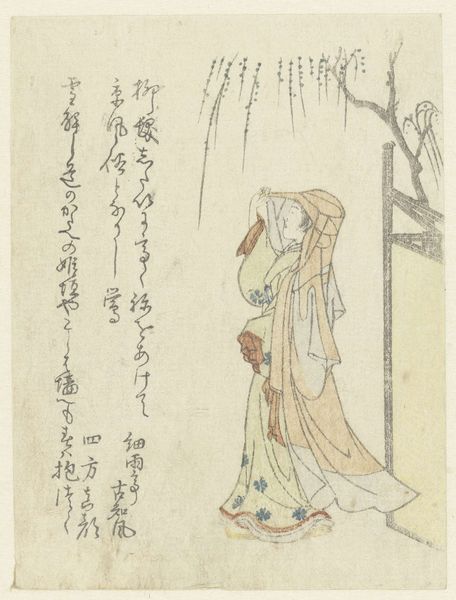
Prostitute as the Daoist Immortal Kinkō riding on a carp c. 1768
0:00
0:00
print, ink, woodblock-print
#
portrait
#
ink painting
# print
#
asian-art
#
ukiyo-e
#
japan
#
figuration
#
ink
#
linocut print
#
woodblock-print
#
orientalism
#
calligraphy
Dimensions: 27 3/16 × 4 5/8 in. (69 × 11.7 cm) (image, sheet, hashira-e)
Copyright: Public Domain
Curator: Here we have a print by Suzuki Harunobu, titled "Prostitute as the Daoist Immortal Kinko riding on a carp," created around 1768. It's part of the Ukiyo-e tradition. What strikes you initially? Editor: There’s a peculiar lightness to it. Despite the suggestive title, the pastel palette and delicate lines give it an almost dreamlike, innocent quality. Curator: Precisely! The composition itself is masterful. Notice the interplay of vertical and horizontal lines. The woman's form and the scroll contrast with the flowing water represented by the horizontal waves. The dark mass of the carp is an intriguing base to the figure, drawing our eyes upward. Editor: Yet, positioning a courtesan as a Daoist immortal is provocative, layering complexities about societal expectations and subversion. The fish becomes more than just an animal but a mode of transportation out of the rigid confines for women at the time. I wonder what is on the scroll. Curator: The inscription could contain witty verse, acting as a meta-commentary on her profession and situation. Harunobu frequently alluded to classical literature, elevating everyday subjects with graceful design. The linework delineates a clear figure-ground relationship throughout the work, while the use of line is precise but restrained. Editor: Restraint may have been a strategy. Consider the era; did these depictions offer a covert commentary on social and moral structures? Or was it reinforcing idealized femininity with a hidden critique of sexual economies? Curator: It operates on multiple levels. The beautiful rendering, the expert arrangement of colors, the delicate printing – these elements offer pure aesthetic delight even when disassociated from specific narrative meaning. The image of a courtesan-turned-immortal is a fusion of elegance, art, and social symbolism, designed for intellectual engagement. Editor: Still, understanding that symbolism opens avenues for critical discussions. Examining this piece reveals insights into social mobility and how images construct narratives surrounding gender, virtue, and liberation in unexpected ways. Curator: Ultimately, Harunobu achieves an ideal fusion of form and narrative here. The delicate colors and carefully orchestrated forms bring a quiet grandeur to this work. Editor: And with the awareness of context and narrative, the gentle aesthetics underscore powerful, multifaceted possibilities for meaning and expression.
Comments
minneapolisinstituteofart about 2 years ago
⋮
The Taoist immortal Kinkō is said to have been fond of fish, and to have passed his days making paintings of them. On his 200th birthday, a great carp appeared which took Kinkō on a sightseeing tour of the waterways. He returned carrying a Buddhist scroll exhorting humankind to refrain from harming fish. Ukiyo-e artists updated the Kinkō theme by transforming the wizened old sage into a beautiful prostitute.
Join the conversation
Join millions of artists and users on Artera today and experience the ultimate creative platform.


